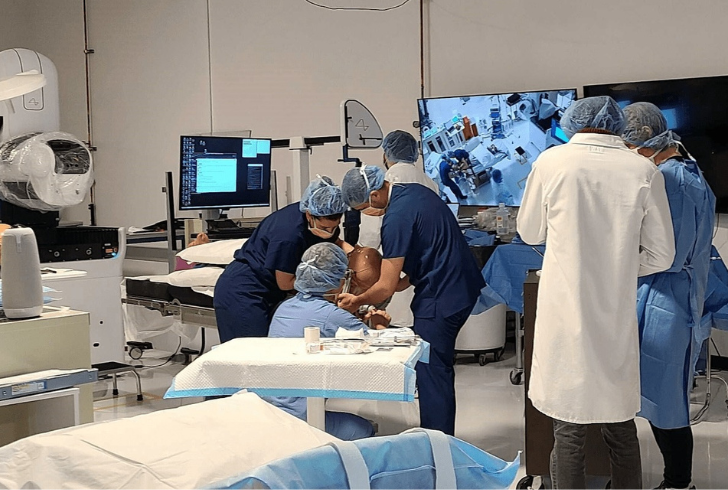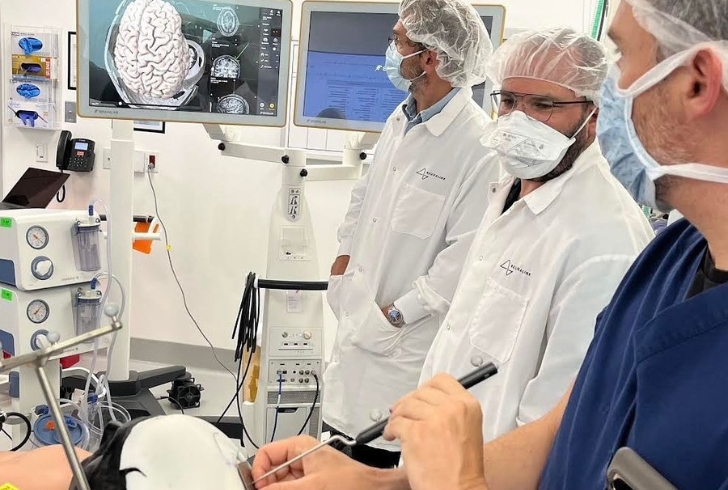Imagine controlling a computer mouse with the mere power of your thoughts. That's the reality for the first recipient of Elon Musk's much-anticipated Neuralink brain implant, according to the tech mogul himself. This groundbreaking achievement marks a significant step forward in brain-computer interface (BCI) technology, blurring the lines between science fiction and reality.
But before we dive into the implications of mind-controlled mice, let's rewind a bit. In September 2023, Neuralink received the green light for human trials, raising both eyebrows and hopes for the future. While details surrounding the recipient and the implantation process remain shrouded in some mystery (think top-secret lab, not Hollywood blockbuster), Musk recently revealed a tantalizing glimpse into their progress.
From Thought to Cursor

Instagram | neura.link | Musk declared progress is good; the recipient appears recovered with no reported side effects.
"Progress is good," Musk declared in a recent online event, his voice brimming with both technical precision and a hint of futuristic wonder. The recipient, seemingly recovered and free of any reported side effects, has achieved the remarkable feat of controlling a computer mouse – simply by thinking.
Think about that for a second. No intricate hand gestures, no clicking required. Just a thought, translated by the Neuralink implant into a digital command, guiding the cursor across the screen. It's a scene straight out of "Minority Report," except this time, it's not a movie prop, but a tangible reality.
Beyond the Click: Expanding the Neural Orchestra
But Musk's ambitions don't stop at mind-controlled cursors. He envisions a future where Neuralink's capabilities extend far beyond basic controls. The goal, as he outlined, is to "get as many button presses as possible from thinking." Imagine navigating complex software, crafting intricate artwork, or even composing music – all through the sheer power of your mind.

Instagram | forbes_da | Musk envisions Neuralink's future capabilities beyond basic controls.
The possibilities are truly mind-boggling. For individuals with paralysis or other motor impairments, Neuralink could offer a newfound sense of independence and control. Imagine a world where someone with locked-in syndrome could express themselves, connect with loved ones, and even create art, all through the magic of BCI technology.
Grand Visions and Cautious Steps
However, with such groundbreaking advancements come concerns and ethical considerations. Musk's pronouncements about treating conditions like obesity, depression, and even autism with Neuralink have raised eyebrows among some experts. The delicate nature of the brain, coupled with the lack of long-term data on BCI implants, necessitates careful consideration and responsible development.
Additionally, the question of data privacy and security looms large. As our thoughts become increasingly intertwined with technology, safeguarding them from misuse becomes paramount. Ethical guidelines and robust regulations are crucial to ensure that this technology benefits humanity, not exploits it.
The Future Beckons

Instagram | neura.link | The mind-controlled mouse experiment marks a major advance for Neuralink and BCI technology.
While the journey is far from over, the successful mind-controlled mouse experiment represents a significant leap forward for Neuralink and BCI technology as a whole. It opens the door to a future where the boundaries between mind and machine are blurred, paving the way for a symphony of possibilities.
But let's not get carried away by the futuristic hype. Responsible development, ethical considerations, and open dialogue with the scientific and public communities are essential to ensure that this technology serves humanity's best interests. The future of BCI is bright, but the path forward requires careful navigation, ensuring that the symphony of minds and machines plays in harmony, not discord.








